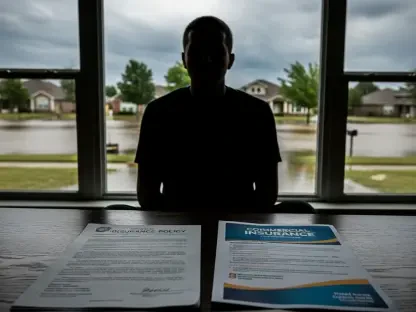Setting the Stage: The Escalating Demand for Political Violence Insurance
In an increasingly unpredictable global landscape, businesses operating across borders face a staggering array of risks, from civil unrest to terrorism, that can disrupt operations overnight. Reports indicate that incidents of political violence have surged by over 30% in key regions since 2025, underscoring a pressing need for specialized protection. Political Violence Insurance (PVI) has emerged as a critical tool to shield companies and communities from such threats, filling gaps left by standard property insurance policies. This market analysis delves into the evolving PVI sector, exploring current trends, data-driven insights, and future projections. It examines how specialty reinsurance intermediaries like EXOS are shaping the industry by bridging risk and capital, while addressing the unique challenges of a volatile world.
Deep Dive into Market Dynamics: Trends, Data, and Future Outlook
Current Landscape: The Shift to Mainstream Necessity
The PVI market has undergone a significant transformation, moving from a niche product to an essential safeguard for a wide range of clients, including multinational corporations and local businesses in frontier markets. Standard insurance often excludes coverage for disruptions like strikes, sabotage, or war on land, creating a substantial gap that PVI addresses. Data suggests that demand for this coverage has spiked in regions with heightened instability, with premium growth in high-risk zones outpacing other insurance sectors by 15% since 2025. This shift reflects a broader recognition of political violence as a persistent threat, driving insurers to expand their offerings and tailor solutions to diverse needs.
Regional Variations: Customizing Coverage for Unique Risks
A defining trend in the PVI market is the emphasis on region-specific strategies to manage varying levels of instability. In areas facing sudden crises, such as parts of the Middle East, insurers often implement rapid responses like aggregation reviews and repricing to control exposure. By contrast, regions with chronic unrest, such as certain South Asian markets, require long-term capacity planning bolstered by local intelligence. This tailored approach helps mitigate issues like pricing volatility, though challenges persist in ensuring affordability without compromising solvency. Market analysis shows that customized policies have increased retention rates by 10% in volatile regions, highlighting the value of adaptability in sustaining client trust.
Technological Innovation: Redefining Underwriting Practices
Innovation stands as a cornerstone of PVI’s evolution, with technology playing a pivotal role in enhancing risk assessment and underwriting precision. Tools such as parametric solutions, artificial intelligence, and social monitoring are being integrated to provide real-time data on emerging threats, enabling faster policy adjustments. Public-private partnerships are also gaining momentum, expanding capacity in underserved markets where local resources are limited. While these advancements promise greater accuracy and access, risks like over-reliance on automated systems or misaligned partnership goals remain. Industry metrics indicate that tech-driven underwriting has reduced claim processing times by nearly 20% in pilot programs, signaling a transformative potential for scalability.
Balancing Act: Technical Discipline and Human Impact
Beyond technological and regional considerations, the PVI market grapples with aligning rigorous analysis with a human-centered focus. Policies protect not just assets but the livelihoods of businesses and communities, particularly in economically constrained frontier markets. Misconceptions that PVI is a luxury rather than a necessity often hinder adoption, especially in areas unfamiliar with its benefits. Insurers are increasingly prioritizing accessible solutions and clear communication to bridge this gap. Recent surveys reveal that markets with educational outreach on PVI see adoption rates rise by 12%, emphasizing the importance of empathy alongside technical expertise in driving market growth.
Future Projections: Emerging Risks and Opportunities
Looking ahead, the PVI market is poised for further expansion as global risks diversify and intensify. Projections suggest a compound annual growth rate of 8% from 2025 to 2027, fueled by emerging threats like climate-driven conflicts and cyber-political disruptions. Regulatory shifts, such as potential mandates for broader coverage in high-risk zones, could reshape pricing structures and market access. Additionally, the integration of advanced technologies is expected to streamline operations, while social monitoring tools may enable preemptive risk management. The rise of public-private collaborations is also anticipated to stabilize volatile regions, though insurers must remain agile to navigate unforeseen geopolitical shifts and economic pressures.
Reflecting on Insights: Strategic Implications and Next Steps
This analysis of the PVI market reveals a sector in rapid adaptation, driven by escalating global instability and the inadequacies of traditional insurance in covering political risks. Specialty intermediaries like EXOS play a crucial role in translating volatility into actionable solutions, leveraging regional customization and technological innovation to meet diverse client needs. The data underscores a clear trajectory of growth, with tailored policies and emerging tools enhancing both coverage and efficiency across high-risk zones.
Moving forward, businesses operating in unstable environments should prioritize securing PVI, seeking partnerships with intermediaries offering localized expertise to ensure robust protection. Insurance professionals ought to invest in cutting-edge risk modeling technologies while maintaining a focus on the human impact of their policies. Advocating for expanded public-private collaborations could further unlock capacity in underserved markets, fostering economic resilience. Regular risk assessments and early engagement with reinsurers emerge as practical steps to address coverage gaps, equipping stakeholders to tackle both sudden crises and chronic unrest effectively. These strategies provide a roadmap for navigating the complexities of political violence risks in an ever-changing global landscape.









